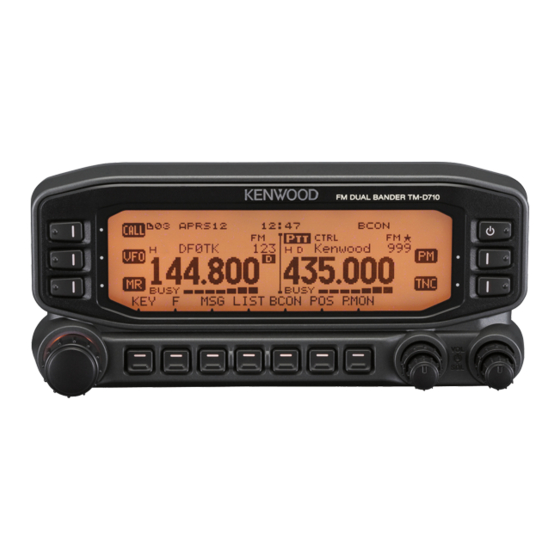
Kenwood TM-D710A (K type) Instruction Manual
144/440 mhz fm dual bander, 144/430 mhz fm dual bander, (k, m4, e type)
Hide thumbs
Also See for TM-D710A (K type):
- Service manual (98 pages) ,
- Manual (65 pages) ,
- Instruction manual (51 pages)














Need help?
Do you have a question about the TM-D710A (K type) and is the answer not in the manual?
Questions and answers
Is west Longitude preceded by a -